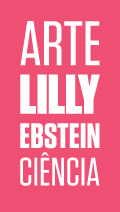The scientific illustration
TECHNIQUES AND APPLICATIONS
-
 Lilly Ebstein | Clique para ver +
Lilly Ebstein | Clique para ver + -
 Faculdade de Medicina | Clique para ver +
Faculdade de Medicina | Clique para ver + -
 Instituto Biológico | Clique para ver +
Instituto Biológico | Clique para ver + -
 Lette-Verein | Clique para ver +
Lette-Verein | Clique para ver + -
 Técnicas de ilustração científica | Clique para ver +
Técnicas de ilustração científica | Clique para ver +
The illustration was an essential tool in the work of scientific institutions in order to consolidate some new knowledge or technique; the illustration contains information that the text alone cannot convey and vice-versa.
Lilly’s work varied and demanded the mastery of different techniques with different uses. There are illustrations where the detail and the preciseness of the scientific information are essential and it is critical to identify visually in the printed drawing, the characteristics of, for instance, the pathology. Others are more schematic, such as the text under the diagram of how a medical team is positioned around a patient during surgery; the correct way of holding instruments and of operating.
In the field of photomicrography, there are microscopic photographs and illustrations made from images seen under the microscope. The drawings of cells examined under the microscope demanded a complex translation, in a different scale, from the image seen to the one drawn, with prior knowledge of the elements to be highlighted for a specific study. Mastering photomicrography also demanded thorough technical knowledge of lenses, and development and magnification processes of images in different formats and supports. In the field of photography, there are photos that were hand-colored.
The scientific, medical and biological drawing or illustration by Lilly Ebstein Lowenstein was a crucial tool for the work at the School of Medicine and other scientific institutions in the country and abroad. It was not an ornamental or secondary drawing, but rather the essential element of the research, the study, the documental and didactic record, the classes, the scientific publication and the formalization of procedures. The text and its indications were not enough to consolidate and disseminate new knowledge or techniques. The illustration contains information, which the text alone cannot convey and vice-versa.
The artistic quality of the drawings was at the service of scientific information and its purpose was to make it more informative and didactic. Thus, the more accurate the artistic quality, the better quality of scientific information, since the purpose was clarity and precision of information.
Lilly Ebstein Lowenstein (1897-1966) led a life between science and art, drawing and taking photographs in the fields of Medicine and Zoology. In her work, Lilly combined her technical knowledge of photography and drawing, the study of the sciences and a remarkable talent for aesthetics. She was born in Germany and studied at the Lette-Verein School in Berlin from 1911 to 1914. In 1925, she immigrated with her husband and two children to São Paulo. In 1926, she became an illustrator and photomicrographer at the Illustration and Photography Department at the School of Medicine (USP, as of 1934), which she headed for thirty years after 1932. Lilly collaborated at Instituto Biológico de Defesa Agrícola e Animal (the Biological Institute for the Defense of Agriculture and Animals), from 1930 to 1935, namely in the Avian Pathology Department. A life with art dedicated to the research and dissemination of science.



